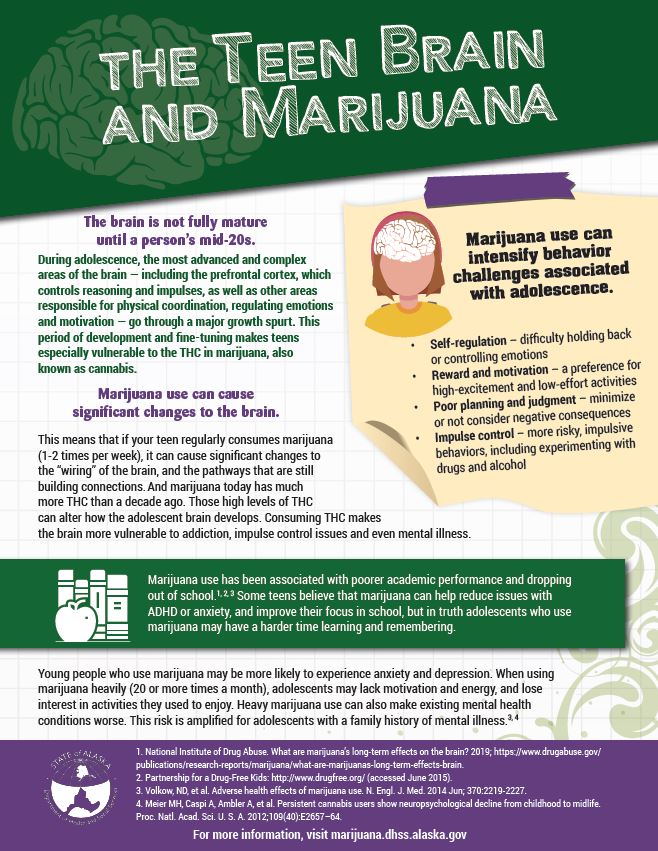Marijuana and the Teen Brain

Adolescence is a time of growth. Especially, in the brain. Your teen’s brain is undergoing massive remodeling until the age of 25, bringing great opportunity and vulnerability. [18-21]
This means that if your teen regularly uses cannabis, it can cause significant changes to the “wiring” of the brain, and the pathways that are still building connections. [18-21]
And marijuana today has much more THC than a decade ago and those high levels of THC can alter how the adolescent brain develops. Leaving the brain vulnerable to addiction, impulse control issues, and even mental illness.
Marijuana and the Teen Brain
Marijuana and the Teen Brain
Verify to continue
To continue, please confirm that you're a human (and not a spambot).
Checking if the site connection is secure
vimeo.com needs to review the security of your connection before
proceeding.
How to talk to your teen about marijuana, now that it’s legal.
Download a guide to help you talk to your teen about marijuana (developed by Seattle Children's Hospital and adapted for Alaska with their permission):
The National Institute on Drug Abuse has developed these resources for parents on preventing underage use of marijuana:
Additional Resources for Teens
The Role of Protective Factors in Preventing Youth Use of Marijuana:
Individual, relationship, community and society level protective factors play an important role in preventing youth from using marijuana. For example, resiliency has been shown to be an individual-level protective factor, whereas family factors such as connectedness is a strong relationship-level protective factor for youth marijuana use prevention. Community and societal level protective factors include factors related to economic stability, social status, and community connectedness.
To learn more, please see the following research:
Safe Storage & Accessibility
Parents and adults need to make sure their marijuana is stored safely away from children of all ages. Colorado, another state that legalized marijuana for personal use, has seen an increase in the number of children under 9 years old who have been to the emergency room or hospitalized from possibly getting into marijuana products.[1] Help prevent children from accidentally consuming marijuana by storing your marijuana products securely in the home.
How should I store my marijuana?
For proper safety, avoid use of marijuana around children, in any form. To avoid accidents, all marijuana-containing products should be:
- Out of sight
- Out of reach
- Clearly labeled
- Stored in a child-resistant container
- Kept in a locked cabinet or box
How you store marijuana should change as children get older. Safe storage around young children may not stop older children or teens.
If children eat or drink marijuana by accident, it can make them very sick. They may have problems walking or sitting up, have a hard time breathing, or start to become sleepy.[1] If you are concerned that your child has consumed marijuana by accident, experts are available at the poison control hotline to answer your questions: 1-800-222-1222. Calling is free and you will be helped quickly. If your child is starting to show concerning symptoms or you are worried about a serious reaction, call 9-1-1 or go to an emergency room right away.
Fact sheets, brochures, and other related publications older than 25 months can be found on the State of Alaska Library Archives website.
[BACK TO TOP]
__________________
Click here for a list of all references.
